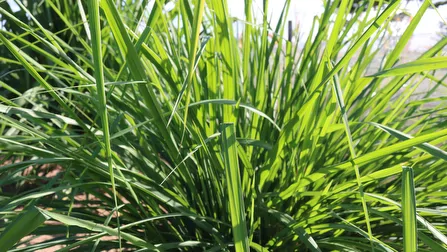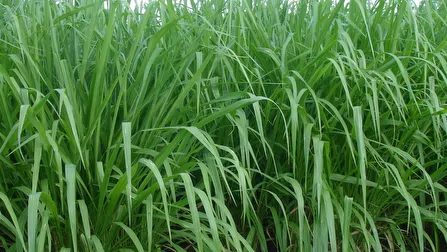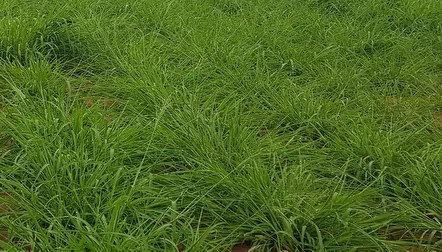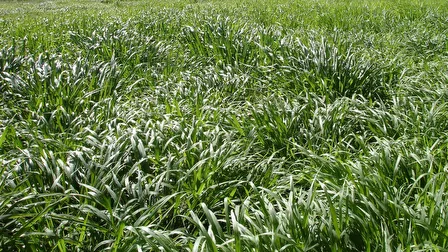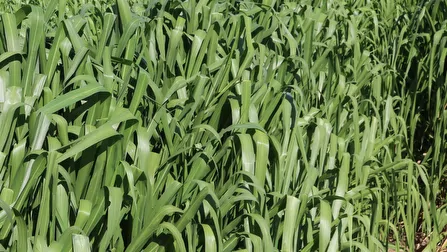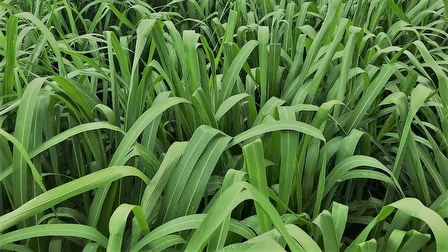
Indicação
Recomendada para solos de média fertilidade e textura arenosa. É utilizada em pastejo direto por bovinos de cria, recria e engorda, silagem ou fenação.
Urochloa brizantha cv. BRS Piatã
Brachiaria brizantha cv. BRS Piatã
Média fertilidade, arenosos e ácidos
Pastejo direto ou fenação
12 a 14 t/ha/ano de matéria seca (M.S.)
8 a 11%
0,85 a 1,10m
Boa
Média
Tolerante
Média
Perene
Utilização e Manejo
O Piatã é uma Brachiaria indicada para solos de fertilidade mediana, arenosos ou com acidez. É utilizada para pastejo direto por bovinos de cria, recria e engorda, silagem e fenação. Recomendamos o uso em pastejo rotacionado ou em piquetes pequenos, com intervalor de descanso de 25 a 30 dias. A altura na entrada da pastagem deve ser de aproximadamente 40 cm e de 15 a 20 cm na saída.
Características Agronômicas
O Piatã apresenta boa qualidade de alta produção de folhas. Sua produção total média de forragem é de 9,5 t/ha/ano de MS com 36% dessa produção se dá durante o período seco.
Origem
Desenvolvida a partir de planta que faz parte da coleção de forrageiras da Embrapa e que originalmente foi coletada peloa CIAT – Centro Internacional de Agricultura Tropical entre 1984 e 1985, na África. O nome Piatã é de origem tupiguarani e significa fortaleza.
Características Morfológicas
É uma planta de porte médio, com altura entre 0,85 a 1,10 m. Suas folhas medem até 45 cm de comprimento e 1,8 cm de largura. Não tem pelos, porém são ásperas na face superior e suas bordas são cortantes. As bainhas, que envolvem os colmos e sustentam as folhas, apresentam poucos pelos claros. O porte é ereto (crescimento em touceira), seus colmos são finos (4 mm), ramificados e verdes. O florescimento é precoce (jan-fev) com maturação das sementes em fev-mar. O Piatã é indicado para as regiões de clima tropical e tropical úmido.
